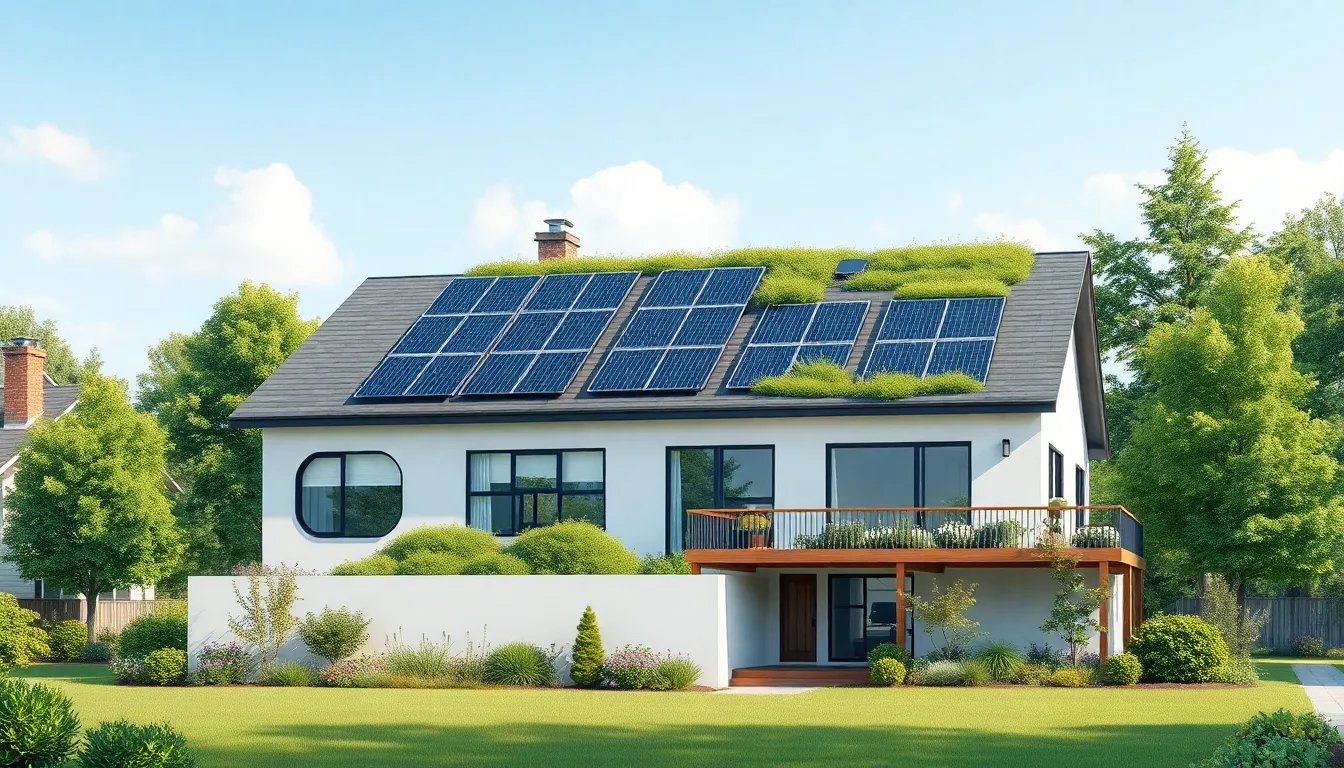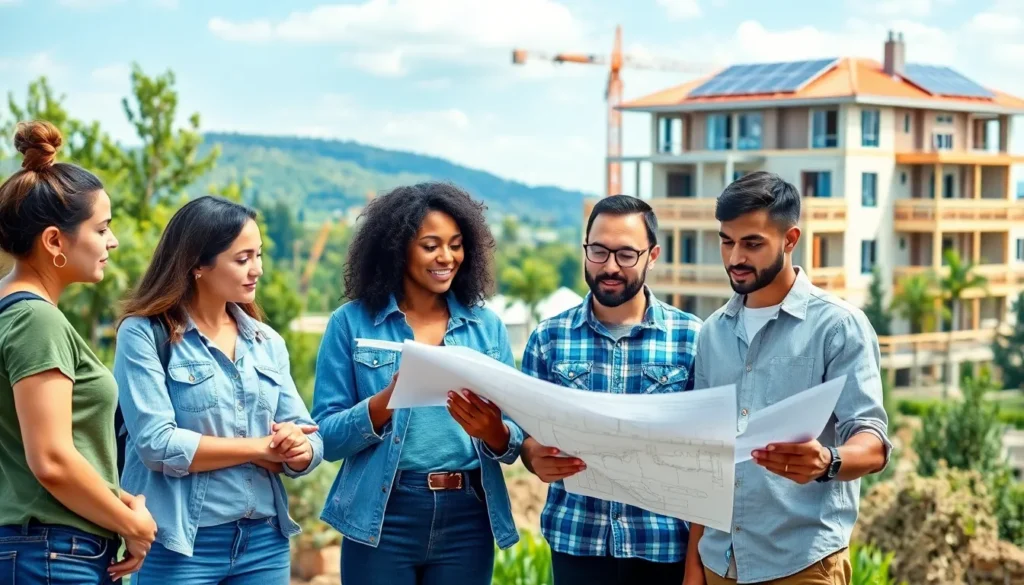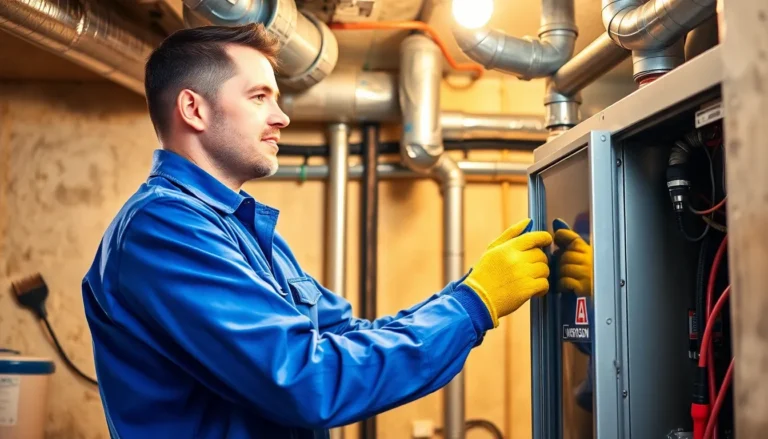Table of Contents
ToggleIn a world where the ice caps are melting faster than your favorite ice cream on a summer day, real estate sustainability trends are more than just a buzzword—they’re a necessity. As homeowners and investors wake up to the reality of climate change, they’re not just looking for a roof over their heads; they want a home that hugs the planet. Who wouldn’t want to live in a place that’s as eco-friendly as their morning green smoothie?
From energy-efficient designs to sustainable materials, the real estate market is embracing a greener future with open arms. It’s time to dive into the latest trends that are transforming properties into eco-oases. Whether you’re a seasoned investor or a curious homeowner, understanding these trends could make all the difference in your next property venture. After all, who wouldn’t want to save the planet while adding value to their home?
Overview Of Real Estate Sustainability Trends
Sustainability trends in real estate reflect a significant shift toward environmentally friendly practices. Homeowners increasingly prioritize energy efficiency, impacting design decisions in new constructions and renovations. Properties designed with sustainable materials not only reduce environmental footprints but also attract eco-conscious buyers.
Buildings certified by organizations like LEED or BREEAM gain notable market value, reinforcing the demand for sustainable architecture. Investment in renewable energy solutions, such as solar panels and green roofs, has surged among property developers. Adoption of smart technologies further enhances energy management, appealing to modern tenants who seek efficiency.
Local governments often incentivize sustainable building practices through tax rebates and grants. Increased awareness of climate change impacts drives a greater collective focus on reducing emissions across the real estate sector. Market research shows that properties with strong sustainability credentials can yield higher returns on investment and decreased operating costs.
Design choices that maximize natural light and ventilation contribute positively to occupant well-being. Use of water-efficient fixtures and landscaping minimizes water usage, aligning with global conservation efforts. Community engagement strategies emphasize the importance of creating eco-friendly spaces that benefit residents and the environment.
Legislation changes are beginning to mandate higher energy performance standards, influencing future developments. Understanding these evolving trends cultivates an essential perspective for investors and homeowners alike.
Key Drivers Of Sustainability In Real Estate

Sustainability in real estate is increasingly influenced by several key drivers, shaping market trends and future developments.
Market Demand
Increased market demand for eco-friendly properties reflects growing consumer awareness about environmental issues. Buyers now prioritize energy-efficient homes equipped with sustainable features. The appeal of these homes extends to amenities such as solar panels and green roofs, which significantly enhance property value. Shift in preferences has made properties with LEED or BREEAM certification particularly attractive to investors. Research indicates that these sustainable properties yield higher returns on investment and lower operating costs. Investors recognize that appealing to eco-conscious buyers creates a competitive edge in the marketplace.
Regulatory Changes
Regulatory changes are playing a vital role in promoting sustainability in real estate. Local governments implement tax incentives and rebates to encourage eco-friendly construction practices. New legislation increasingly mandates higher energy performance standards for buildings, driving developers to prioritize sustainability. Compliance with these regulations is no longer optional but crucial for future projects. Enhanced energy performance leads to reduced emissions and operational costs over time. Regulations foster innovation, pushing the real estate sector toward integrating smart technologies and sustainable materials in its designs. Developers must stay informed about evolving policies to maintain competitiveness in the industry.
Innovative Sustainable Practices
Sustainable practices in real estate are transforming the industry. Innovative approaches address environmental concerns while enhancing property values.
Green Building Certifications
Green building certifications signify a commitment to sustainability. LEED and BREEAM are two leading organizations that assess energy efficiency and environmental impact. Properties achieving these certifications often attract eco-conscious buyers and tenants. Certified buildings typically possess better resale value and lower operating costs. Studies indicate certified properties consume less energy, which aligns with rising consumer demands for environmentally responsible options. Certification processes evaluate sustainability across multiple metrics, ensuring that developers meet rigorous standards.
Energy-Efficient Technologies
Energy-efficient technologies play a crucial role in sustainable real estate. Smart home systems optimize energy use by automatically adjusting heating and cooling based on occupancy and external conditions. Solar panels provide renewable energy, significantly reducing utility expenses while promoting energy independence. Additionally, energy-efficient appliances consume less power, directly lowering residents’ carbon footprints. High-performance HVAC systems enhance indoor climate control and minimize energy waste. The integration of these technologies not only boosts occupant comfort but also increases a property’s appeal in competitive markets.
Impact Of Sustainability On Property Value
Sustainability significantly affects property value in today’s real estate market. Eco-friendly properties attract buyers who prioritize energy-efficient designs. Studies show that homes with sustainable features like solar panels or green roofs command higher market prices. Properties earning certifications from LEED or BREEAM often have better resale values, making them appealing investments.
Investors recognize that sustainable buildings typically incur lower operating costs. Less energy usage translates to reduced utility bills, contributing to overall cost efficiency. Buyers frequently evaluate energy performance as a crucial factor in their purchasing decisions. Research indicates that properties boasting strong sustainability credentials yield higher returns, enhancing their investment appeal.
Community engagement strategies also play a role in elevating property value. Spaces designed with sustainability in mind foster a sense of belonging and often lead to increased demand. Legislative measures, such as tax incentives for energy-efficient renovations, further drive property value growth.
Innovative technology integration enhances a property’s eco-friendliness. Smart home systems optimize energy usage, increasing overall efficiency and attractiveness to tech-savvy buyers. Properties showcasing advanced energy-efficient technologies often stand out in competitive markets.
Understanding these sustainability impacts helps both homebuyers and investors make informed decisions. As eco-consciousness grows among consumers, value enhancement through sustainable practices becomes a priority in real estate development. The connection between sustainability and property value ensures that investments align with future market trends while positively contributing to the environment.
Future Outlook For Real Estate Sustainability Trends
Sustainability trends in real estate are poised for significant growth, with increased market demand for eco-friendly properties driving change. Homeowners continue to prioritize energy-efficient designs, influencing new constructions and renovations. The adoption of green technologies enhances energy management, making spaces more appealing to environmentally conscious tenants.
Investment in renewable energy solutions is on the rise. Properties featuring solar panels and green roofs attract buyers who seek reduced operating costs as well as eco-friendliness. In turn, buildings with certifications such as LEED and BREEAM demonstrate commitment to sustainable practices, often yielding higher resale values.
Local governments continue to introduce incentives, including tax rebates, which encourage sustainable building practices. Regulatory changes are establishing higher energy performance standards that shape future developments. These factors contribute to a collective focus on reducing emissions in the sector.
Innovative practices are transforming the industry, with sustainable materials and smart technologies becoming integral in real estate development. Community engagement and awareness campaigns showcase the importance of eco-friendly spaces. Properties built with water-efficient fixtures and designs maximizing natural light improve occupant well-being while supporting global conservation efforts.
Research indicates that properties with strong sustainability credentials yield higher returns on investment. Investors increasingly recognize the competitive edge of eco-friendly buildings in the market. Understanding these trends is vital for homebuyers and investors to ensure their investments align with evolving market demands and contribute positively to the environment.
Sustainability is no longer just a trend in real estate; it’s a necessity. As the market shifts towards eco-friendly properties, both homeowners and investors must adapt to this evolving landscape. The integration of energy-efficient designs and sustainable materials enhances property value while addressing climate concerns.
Investors who embrace these trends can expect not only higher returns but also lower operating costs. With local governments incentivizing sustainable practices and regulatory changes pushing for better energy performance, the future of real estate is undoubtedly green. Adopting innovative technologies and community engagement strategies will further solidify the importance of sustainability in real estate, ultimately benefiting both the environment and the market.




